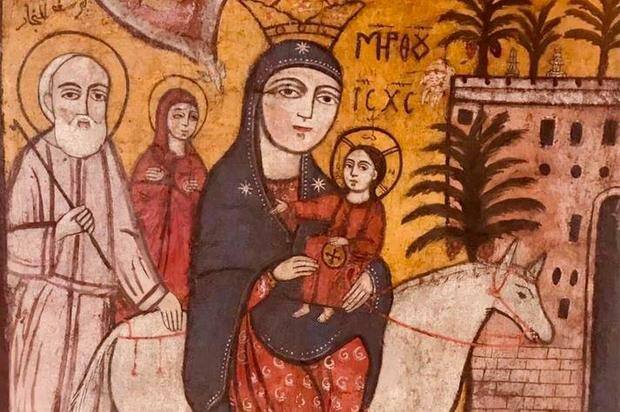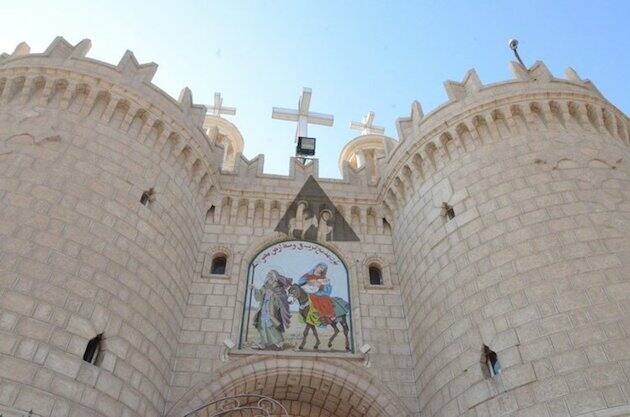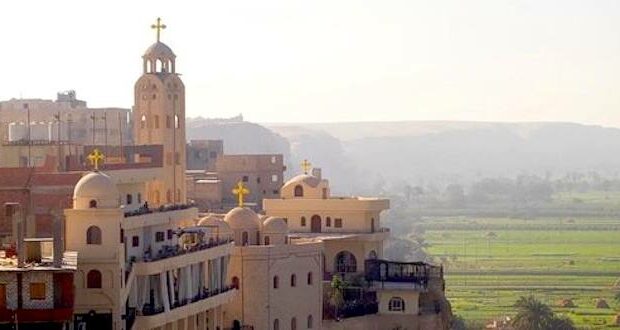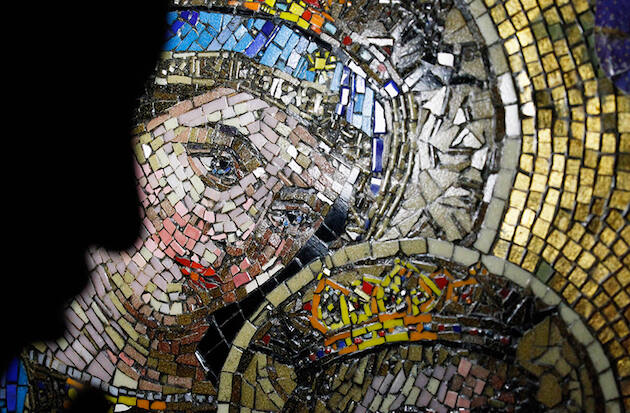CAIRO — Egypt is developing the Holy Family Trail, a pilgrimage of sites from Jesus’ infancy to his wandering in the desert, hoping to revive its tourist industry battered by two years of COVID-19 travel restrictions.
Spread out across eight of the modern-day state’s 27 governorates, the 3,220-kilometer (2,001-mile) route offers a fascinating adventure for those with a four-wheel-drive vehicle — or better yet an air-conditioned van. With the blistering heat in the Sahara, Nubian and Sinai deserts most of the year, Christmas and the cool winter months are the ideal season to make the pilgrimage.
Of the trail’s 25 sites, just nine locations don’t have antiquities or archaeological evidence.
“We will use virtual reality and lighting systems to help visitors imagine the scene,” project coordinator Adel al-Gendy of Egypt’s Tourism Development Authority told CBS News.
According to the sources of the Coptic Orthodox Church, primarily the vision documented by Pope Theophilus 15 centuries ago and recorded in the Coptic official account of saints, the Holy Family fled from the Milk Grotto in Bethlehem on a donkey. Every June 1, the 10 million members of Egypt’s Coptic Orthodox Church commemorate that escape to Egypt. According to the Biblical story, the Archangel Gabriel visited Joseph and told him to flee with his baby Jesus and his wife Mary to Egypt, to hide from King Herod of Judea, who would search for the newborn child to kill him. They spent some three years in Egypt.

A painting dating from the 18th or 19th century depicts the Bible’s Holy Family, Joseph, Mary and the baby Jesus, during their time in Egypt, as shown in an exhibition at the Coptic Museum in Sharm El-Sheikh, Egypt, to celebrate the family’s journey through Egypt.
EGYPTIAN MINISTRY OF TOURISM AND ANTIQUITIES
From Bethlehem, Mary, Joseph and baby Jesus zigzagged to several sites mentioned in the Hebrew Bible. In Jerusalem, Mary washed out her son’s diapers at the Gihon Spring in the City of David, which was captured by his ancestor King David 1,000 years earlier. They continued northeast to Wadi Qelt or Nahal Prat where the Prophet Elijah had been fed by ravens. An icon in the Mar Gerasimos Monastery near Jericho at the end of the creek depicts Mary breastfeeding, like at the Milk Grotto.
TRAVEL TO ISRAEL WITH US: Departing this spring.
The family arrived in Egypt through Rafah, today a border city in the Sinai Peninsula that sprawls across the southwestern corner of the Gaza Strip. Crossing Sinai in the reverse direction of the children of Israel, the Holy Family proceeded to al-Zaraniq (also known as Floussiat), 37 kilometers (23 miles) west of al-Arish; then they continued across northern Sinai until Farma (ancient Pelusium), mid-way between al-Arish and present-day Port Said.
Entering Lower Egypt’s lush Nile Delta, the family stopped at Bubastis, called Tell Basta in Arabic, today located in Zagazig, the main town in the Sharqiah Governorate about 81 kilometers (50 miles) northeast of Cairo, along the Nile River’s eastern Damietta branch. In antiquity, the city was renowned as a cult center for the worship of the feline goddess Bastet and was the principal depository in Egypt of mummified cats. According to Coptic lore, baby Jesus’ arrival caused the temples’ foundations to shake, echoing Isaiah’s prophecy: “The idols of Egypt will tremble at his presence.” (Isaiah 19:1) While fleeing from the locals’ fury, Jesus miraculously caused a spring to burst forth to quench the trio’s thirst.
The family received a warmer welcome in Mostorod on the outskirts of modern Cairo, a town today swallowed by the capital’s urban sprawl. Today’s suburb includes a 12th-century church built to enclose al-Mahamah (the place of bathing), a well from which the Holy Family is thought to have drunk and washed. Some worshippers write prayers to stuff in a nearby sacred grotto.
The Holy Family Trail veers north before crossing the Rosetta branch of the Nile, the westernmost fork of the delta. Passing south through the desert, the trail leads to Wadi al-Natrun, a valley where Jesus called forth yet another miraculous spring. Beginning in the early fourth century, thousands of aspiring hermits settled along its length. Of the four surviving monasteries of the 50 once occupied here, the most impressive is Deir al-Souriyan (the Syrian) with its newly restored medieval frescoes of Jesus’ life.

Deir al-Muharraq Monastery near Mount Qusqam in Egypt is considered a second Bethlehem by Coptic Christians, who believe that Mary, baby Jesus and Joseph lived here for six months until an angel told Joseph that King Herod had died and it was safe for them to return to Judea. Photo by Gil Zohar.
The others are St. Macarius (Deir Aba Maqār), the monastery of the Romans (Deir el Baramos) and St. Pshoï (Deir Amba Bichoi)
The Holy Family Trail then circles back to the outskirts of Cairo at Shagaret Maryam (Mary’s Tree), a gnarled sycamore said to have offered the Holy Family shade. Entering the complex containing the ancient tree is another well from which the family is thought to have drunk. The trunk is propped by struts and protected by a picket fence so pilgrims won’t peel its bark.
Continuing to Coptic Cairo, the trail includes the fourth-century Church of Abu Serga, built over the cave where the family lived for three months.
The next stop is in southern Cairo’s garden suburb district of Maadi. Here, at the Church of the Virgin Mary, the family descended a flight of steps to the river bank. Boarding a papyrus felucca, they sailed up the Nile to Memphis and al-Bahnasa, the site of another future monastic hub.
At the junction of Lower and Upper Egypt, the family finally reached Gabal al-Tayr (the Mountain of the Birds), today the home of the Church of the Blessed Virgin. Closed to tourists because of security concerns from the 1990s until recently, this magnificent monastery is perched on a cliff overlooking the verdant Nile Valley. Climbing the 166 steps cut into the face of the rock face, one arrives at a church reputed to have been built by Helena, the mother of Constantine, in 328 A.D.
Continuing upriver, they eventually reached ancient Hermopolis Magna. Today the vast archaeological site is encircled by the scruffy town of al-Ashmunain. Jesus’ miracles here, including the toppling of more temples, are described in the oldest surviving text on the family’s flight, “A History of the Monks in Egypt,” an anonymous account of the fourth century travels of trailblazing pilgrims.
Hugging the desert’s edge, the family soon arrived at Mount Qusqam, their most hallowed stop, where they lived for six months until an angel told Joseph that King Herod had died, and it was now safe to return to Judea. The holy ground here is encircled by a fortress-like monastery known as Deir al-Muharraq considered a “second Bethlehem” by Coptic Christians.
Here, at the turn of the fifth century, Theophilus, the patriarch of Alexandria from 385 to 412, first fleshed out the Holy Family’s route, which he claimed to have received from the Virgin Mary in a vision.
Some 50 kilometers (31 miles) further south, the Monastery of Saint Mary is the Holy Family Trail’s final station. Driving here, one is required to have a police escort. The al-Muharraq monastery complex here is the largest along the entire route, stretching up a mountain near the city of Asyut. Construction continues apace. On April 2, 1968, the Virgin Mary appeared at one of the site’s sacred caves.
While the exact route the Holy Family took is lost in the fog of time, with multiple contradictory accounts from centuries ago, the Holy Family Trail today offers an inspiring trek with the patina of holiness combining the solitude of the desert with the teeming bustle of contemporary Cairo. Whether the trail will fulfill the Ministry of Tourism’s vision to diversify Egypt’s attractions beyond the glory of the pharaohs and the splendor of Red Sea scuba diving remain to be seen.
Gil Zohar was born in Toronto, Canada and moved to Jerusalem, Israel in 1982. He is a journalist writing for The Jerusalem Post, Segula magazine, and other publications. He’s also a professional tour guide who likes to weave together the Holy Land’s multiple narratives.
 Metro Voice News Celebrating Faith, Family & Community
Metro Voice News Celebrating Faith, Family & Community










